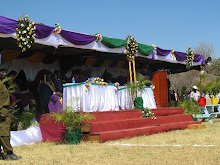Kilimanjaro is the highest mountain in Africa, a magnificent and spectacular undertaking mountain in the world with weather quite diverse.
The climb starts through a wide belt of wet tropical forest then goes through zones with generally decreasing temperatures and rainfall to the summit where there is permanent ice and sub-freezing temperatures. Our trips avoid the rainy season, which runs from March to May, and the short rains in November.
Because Kilimanjaro is so close to the equator it has not only more stable weather with no marked winter months but also offers a wide range of vegetation zones on the ascent.
The main seasonal differences are caused by the damp season which starts from March to the end of May or early June. Clouds tend to pile up and over the high point, dropping snow on top and rain at the base. The temperatures at this time of year are relatively warm but cool down slightly in the dry season.
June and July can be very cold at night, but usually clear of clouds. These are good months to climb as the weather is stable and the mountain is quieter.
August and September are a little warmer and can have completely clear days, but the forest and moorland are often blanketed in cloud. It is peak climbing season on the mountain.
October and November are quieter on the mountain but weather can be a bit unstable with thunderstorms building up over the mountain in the afternoons in November but this should not affect your top attempt. http://www.ventureout.co.za/Tanzania/Kilimanjaro/Kili%20climate.htm
Kilimanjaro has glaciers which have been change and reduising since a long time ago.
Kilimajaro’s famous glaciers have shrunk by a hopping 82% since the first survey of the summit in 1912. Even since 1989, when there were 3.3 square kilometres, there has been a decline of 33%. At that rate, say the experts, Kili will be completely ice-free within the next decade or two.‘We found that the summit of the ice fields has lowered by at least 17 metres since 1962,’ said Professor Lonnie Thompson of Ohio State University. ‘That’s an average loss of about a half-metre (a foot and a half) in height each year.’
Now some Scientific studies of Kilimanjaro’s disappearing glaciers are being done and have been done. Professor Thompson and his team are attempting to find answers to all these questions.
In January and February 2000 they drilled six ice cores through three of Kibo’s glaciers in order to research the history of the mountain’s climate over the centuries. (Follow this link to read a BBC report of their work). A weather station was also placed on the Northern Icefield to see how the current climate affects the build-up or destruction of glaciers.
Although results are still coming in from Professor Thompson’s work, early indications were not good. In a speech made at the annual meeting of the American Association for the Advancement of Science in February 2001, the professor declared that, while he cannot be sure why the ice is melting away so quickly, what is certain is that if the glaciers continue to shrink at current rates, the summit could be completely ice-free by 2015.
We can still thinking about the future of the mount Kilimanjaro, hatever the reasons, if Kilimanjaro is to lose its snow top, the repercussions would be extremely serious: Kilimanjaro’s glaciers are essential to the survival of the local villages, supplying their drinking water, the water to irrigate their crops and, through hydroelectric production, their power; never mind the blow the loss of the snow-cap would deal to tourism.
And these are just the local consequences. If the scientists are to be believed, what is happening on Kilimanjaro is a microcosm of what could face the entire world in future. Even more worryingly, more and more scientists are now starting to think that this future is probably already upon us.
http://www.climbmountkilimanjaro.com/about-the-mountain/the-glaciers/climate-change-and-kilimanjaro/index.html
Saturday, 27 September 2008
Subscribe to:
Post Comments (Atom)

No comments:
Post a Comment